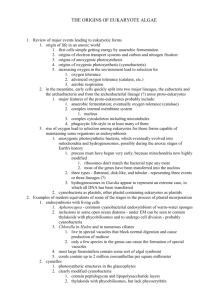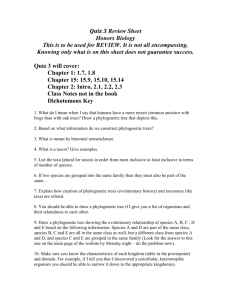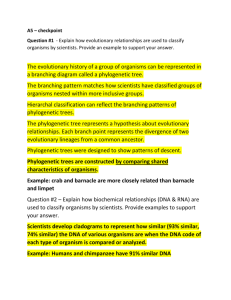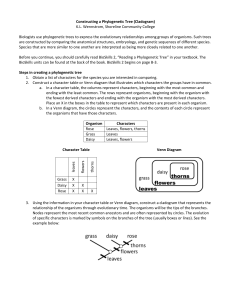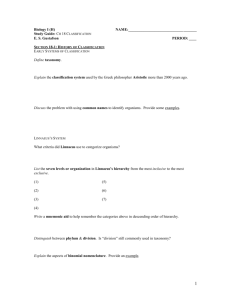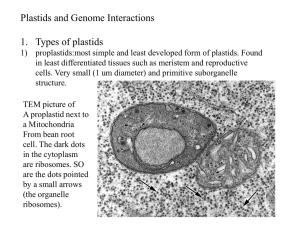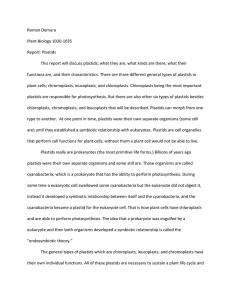Photosynthetic and Atmospheric Evolution
advertisement
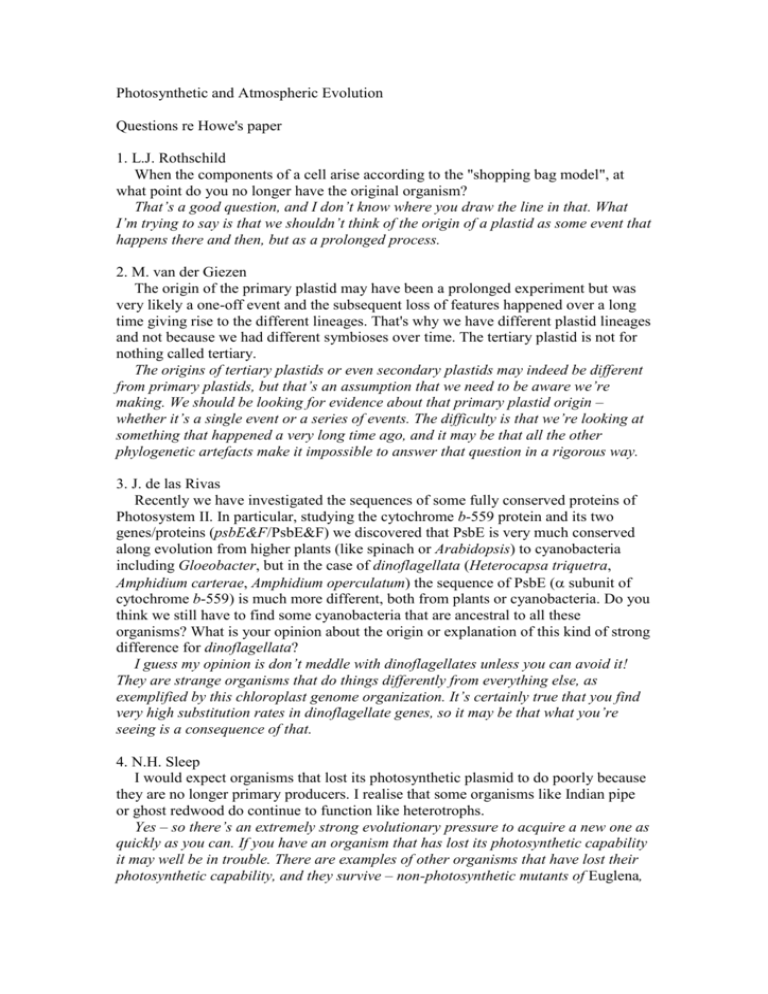
Photosynthetic and Atmospheric Evolution Questions re Howe's paper 1. L.J. Rothschild When the components of a cell arise according to the "shopping bag model", at what point do you no longer have the original organism? That’s a good question, and I don’t know where you draw the line in that. What I’m trying to say is that we shouldn’t think of the origin of a plastid as some event that happens there and then, but as a prolonged process. 2. M. van der Giezen The origin of the primary plastid may have been a prolonged experiment but was very likely a one-off event and the subsequent loss of features happened over a long time giving rise to the different lineages. That's why we have different plastid lineages and not because we had different symbioses over time. The tertiary plastid is not for nothing called tertiary. The origins of tertiary plastids or even secondary plastids may indeed be different from primary plastids, but that’s an assumption that we need to be aware we’re making. We should be looking for evidence about that primary plastid origin – whether it’s a single event or a series of events. The difficulty is that we’re looking at something that happened a very long time ago, and it may be that all the other phylogenetic artefacts make it impossible to answer that question in a rigorous way. 3. J. de las Rivas Recently we have investigated the sequences of some fully conserved proteins of Photosystem II. In particular, studying the cytochrome b-559 protein and its two genes/proteins (psbE&F/PsbE&F) we discovered that PsbE is very much conserved along evolution from higher plants (like spinach or Arabidopsis) to cyanobacteria including Gloeobacter, but in the case of dinoflagellata (Heterocapsa triquetra, Amphidium carterae, Amphidium operculatum) the sequence of PsbE ( subunit of cytochrome b-559) is much more different, both from plants or cyanobacteria. Do you think we still have to find some cyanobacteria that are ancestral to all these organisms? What is your opinion about the origin or explanation of this kind of strong difference for dinoflagellata? I guess my opinion is don’t meddle with dinoflagellates unless you can avoid it! They are strange organisms that do things differently from everything else, as exemplified by this chloroplast genome organization. It’s certainly true that you find very high substitution rates in dinoflagellate genes, so it may be that what you’re seeing is a consequence of that. 4. N.H. Sleep I would expect organisms that lost its photosynthetic plasmid to do poorly because they are no longer primary producers. I realise that some organisms like Indian pipe or ghost redwood do continue to function like heterotrophs. Yes – so there’s an extremely strong evolutionary pressure to acquire a new one as quickly as you can. If you have an organism that has lost its photosynthetic capability it may well be in trouble. There are examples of other organisms that have lost their photosynthetic capability, and they survive – non-photosynthetic mutants of Euglena, for example. It’s not immediate death, but you need to do something about it pretty soon! 5. J. Davies In your shopping bag model everything you put in there has been very carefully selected and in the course of that selection you have rejected many items on the basis of price, or whatever. So it is not random. Yes, I suppose the parallel to that would be that, of the genes that had accumulated in the nucleus prior to the establishment of the latest stable endosymbiont, only some would encode proteins that would assemble effectively with proteins present within the symbiont. So there is a need for some kind of selection to make sure those genes are tied in with the needs of the endosymbiont. I would argue that’s an even better extension of the shopping bag model. It’s a good point. 6. P.G. Falkowski At present we don't have a complete nuclear sequence for any dinoflagellate. What is the evidence that non-photosynthetic dinoflagellates acquired plastids and then lost them, or never had them at all? It makes a big difference to the way we account for the phylogeny of secondary and tertiary plastids. That’s a good question, but I’m not sure it necessarily affects the model I’m proposing here. There are data that indicate in some non-photosynthetic dinoflagellates the presence of sequences that are apparently of photosynthetic origin. (References to this have been included in the revised version of the manuscript.) 7. JF Allen This word "proof" - When you ask "Can we prove a monophyletic origin of plastids?" you are using "prove" to mean "establish with certainty the truth of …" This form of "prove" has no place in the natural sciences. All we can hope to do is what William of Occam would urge us to do, which is to find the most economical explanation that sufficiently explains that which we observe. I knew this was going to be a discussion meeting, but I didn’t know it was going to be that sort of discussion! (The discussions of proof and refutation have been refined in the revised version of the manuscript.) 8. DBA Epstein Is there a problem of methodology in the phylogenetic reconstruction used by some workers? Phylogenetic trees are often provided without any indication of the extent of possible errors. Related to this, are nucleotide sequences a reasonable basis for inference on events around 1 billion years ago? Should one rather use protein sequence structure, or even protein shape as something that changes more slowly than nucleotide sequence. In answer to the first question, people certainly do try to put some kinds of estimate of statistical reliability on the trees that they construct. Now some of those methods may or may not be reliable. A very popular method is bootstrapping. The danger is that if you have long branch attraction you can get trees that are completely robust under that statistical analysis even though they are in error. In terms of your second point, I would agree with you completely that phylogenetic analysis, particularly for these ancient divergences, needs to be understood in conjunction with information on protein structure, protein function, what are the regions of particular molecules that are interacting with others – and therefore which sites are free to vary and which aren’t. Systematic biases can be very dangerous indeed in phylogenetic reconstruction.
